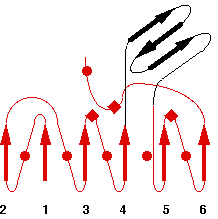1DWO
Name : Manihot esculenta hydroxynitryle lyase complexed with acetone
Revelation date : 07-Dec-2000
Family : Hydroxynitrile_lyase
Gene_locus : manes-hnl
PDB file : ESTHER: header of PDB entry RCSB: Full entry
Comment
Ligand :
References (1)
| Title : Structure of hydroxynitrile lyase from Manihot esculenta in complex with substrates acetone and chloroacetone: implications for the mechanism of cyanogenesis - Lauble_2001_Acta.Crystallogr.D.Biol.Crystallogr_57_194 |
| Author(s) : Lauble H , Forster S , Miehlich B , Wajant H , Effenberger F |
| Ref : Acta Crystallographica D Biol Crystallogr , 57 :194 , 2001 |
| Abstract : Lauble_2001_Acta.Crystallogr.D.Biol.Crystallogr_57_194 |
| ESTHER : Lauble_2001_Acta.Crystallogr.D.Biol.Crystallogr_57_194 |
| PubMedSearch : Lauble_2001_Acta.Crystallogr.D.Biol.Crystallogr_57_194 |
| PubMedID: 11173464 |
| Gene_locus related to this paper: manes-hnl |
Representative scheme of Prolylcarboxypeptidase structure and an image from PDBsum server

